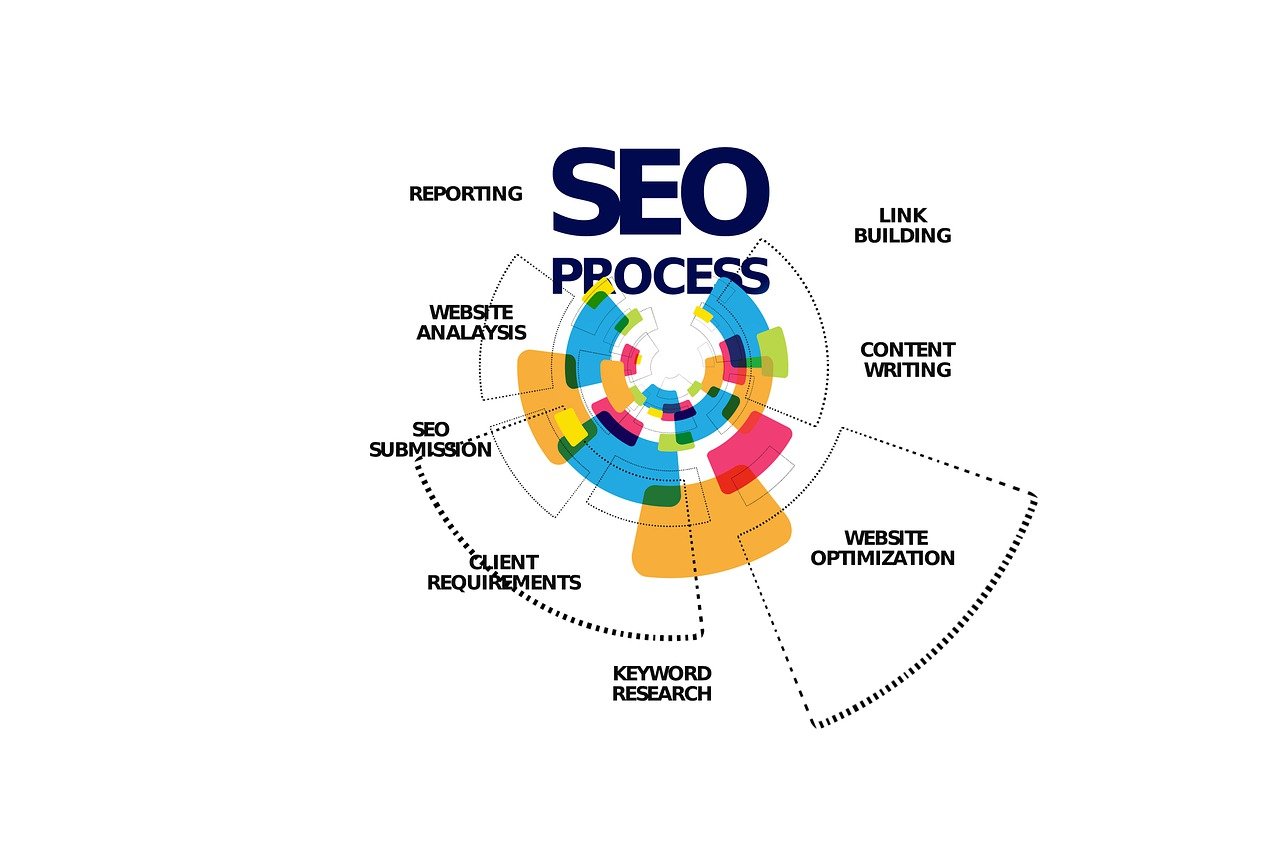Unleashing the Power of Content Strategy: Your Guide to Success
By Dean Sander on Mon, Nov 06, 2023 @ 12:00 PM

In today's digital landscape, content marketing has become a crucial aspect of any successful marketing strategy. Content marketing involves creating and distributing valuable, relevant, and consistent content to attract and engage a target audience. But simply creating content without a well-defined strategy is like shooting in the dark. This is where content strategy comes into play. It provides a systematic approach to planning, creating, delivering, and managing content that aligns with business goals and meets the needs of the target audience.

What is Content Marketing?
Content marketing is a strategic marketing approach that focuses on creating and distributing valuable, relevant, and consistent content to attract and retain a clearly defined audience. The goal is to drive profitable customer action by providing helpful information, solving problems, and establishing trust and credibility with the audience. Content marketing encompasses various formats, such as blog posts, ebooks, videos, podcasts, and social media updates.
The Importance of Content Strategy
While content marketing is the broader concept, content strategy is the underlying foundation that ensures the success of content marketing efforts. Without a well-defined content strategy, businesses may waste resources creating content that is ineffective and fails to meet the needs of their audience. A content strategy provides a roadmap for creating, delivering, and governing content that serves a legitimate purpose and aligns with business objectives. It helps businesses avoid the trap of treating content as an afterthought and ensures that content is planned, organized, and optimized for maximum impact.
1. Understanding Content Strategy
Definition and Purpose
Content strategy, as defined by Kristina Halvorson in her book "Content Strategy for the Web," is the ongoing practice of planning for the creation, delivery, and governance of useful, usable, and effective content about a particular topic or set of topics. The purpose of content strategy is to ensure that every piece of content in the user experience serves a legitimate purpose and contributes to the overall success of the organization. A well-crafted content strategy specifies the objectives of the content, identifies the stakeholders involved in its creation and maintenance, determines the most effective formats and channels for reaching the target audience, and establishes guidelines for structuring, tagging, and organizing the content.
Content Strategy vs. Content Tactics
It's important to distinguish between content strategy and content tactics. Content strategy is the overarching plan that guides the creation, delivery, and governance of content, while content tactics refer to the specific actions taken to execute the strategy. Content tactics include activities like copywriting, video production, social media promotion, and design. A content strategy provides the context and purpose for these tactics, ensuring that they align with the overall goals of the organization and the needs of the target audience.
2. The Phases of Content Strategy
A content strategy encompasses four conceptual phases: planning, creation, maintenance, and unpublishing. These phases are not linear but rather cyclical, as content continually moves back and forth between them throughout its lifecycle.
Planning
The planning phase is where the foundation of the content strategy is laid. It involves conducting a content inventory and audit to understand the existing content, assessing its effectiveness, and identifying gaps and opportunities. The planning phase also includes defining the goals of the content, clarifying roles and responsibilities, and establishing a content management model. This phase sets the stage for the subsequent phases of content creation, maintenance, and unpublishing.
Creation
The creation phase involves ideation, development, and publication of the content. It includes activities like researching, writing, designing, and producing the content in various formats and channels. During this phase, it is essential to adhere to best practices, editorial standards, and style guidelines to ensure consistency and quality. The content creation phase should be closely aligned with the goals and objectives defined in the planning phase.
Maintenance
The maintenance phase focuses on the ongoing management, review, and optimization of the content. It involves conducting regular content reviews to ensure accuracy, relevance, and alignment with business objectives. Content maintenance also includes monitoring the performance of the content, measuring its success through key performance indicators (KPIs), and making necessary updates and improvements. The maintenance phase is crucial for keeping the content fresh, engaging, and effective over time.
Unpublishing
The unpublishing phase is often overlooked but is equally important in content strategy. It involves the removal or archiving of outdated or irrelevant content. Unpublishing ensures that the content remains up-to-date and aligns with the current goals and needs of the organization and its audience. The unpublishing phase also includes redirecting or updating internal and external links to maintain a seamless user experience and preserve SEO rankings.
3. Developing a Content Strategy Framework
To develop an effective content strategy, it is essential to follow a systematic framework. This framework consists of several key steps that guide the planning, creation, and management of content.
Define Your Goals
The first step in developing a content strategy is to define your goals. What do you want to achieve with your content marketing efforts? Are you aiming to increase brand awareness, generate leads, drive conversions, or establish thought leadership? Clearly articulating your goals will help you align your content strategy and tactics with your overall business objectives.
Conduct Persona Research
Understanding your target audience is crucial for developing a successful content strategy. Conducting persona research helps you identify the characteristics, preferences, and needs of your audience segments. By creating detailed buyer personas, you can tailor your content to resonate with specific groups and address their pain points effectively. Persona research can be conducted through surveys, interviews, and data analysis.
Run a Content Audit
A content audit is an essential step in content strategy development. It involves reviewing and analyzing your existing content to assess its quality, relevance, and effectiveness. A content audit helps you identify gaps, redundancies, and opportunities for improvement. It provides insights into which content performs well and which needs to be updated or retired. By conducting a content audit, you can ensure that your content strategy builds upon your existing assets and addresses any shortcomings.
Choose a Content Management System
A content management system (CMS) is a software platform that enables you to create, manage, and publish content on your website or other digital channels. Choosing the right CMS is crucial for the efficient execution of your content strategy. Consider factors such as ease of use, customization options, security, and cost-effectiveness when selecting a CMS. Popular CMS options include HubSpot CMS, WordPress, and Drupal.
Determine Content Types
Based on your goals, audience research, and content audit findings, determine the types of content that will best meet the needs of your target audience and support your business objectives. Common content types include blog posts, ebooks, case studies, templates, infographics, videos, podcasts, and social media updates. Consider the preferences and consumption habits of your target audience when deciding on the content formats.
Brainstorm Content Ideas
Once you have defined your content types, it's time to brainstorm content ideas. Use tools like Feedly, BuzzSumo, BlogAbout, and CoSchedule Headline Analyzer to generate captivating and engaging content ideas. Leverage your persona research, industry trends, and keyword research to come up with topics that resonate with your audience. Consider different angles, formats, and channels to ensure a diverse and compelling content mix.
Publish and Manage Your Content
The final step in developing a content strategy is to establish a content publishing and management process. Create an editorial calendar to plan and schedule the creation, publication, and promotion of your content. Use content management tools and workflows to streamline collaboration, ensure quality control, and track the performance of your content. Regularly review and update your content based on analytics and feedback to keep it relevant and effective.
4. Key Questions When Creating a Content Strategy
When creating a content strategy, it's important to ask yourself key questions that will guide your decision-making and ensure the effectiveness of your strategy.
Who is Your Audience?
Start by clearly defining your target audience. Who are they? What are their demographics, interests, and pain points? Understanding your audience will help you create content that resonates with them and addresses their specific needs.
What Problem Will You Solve?
Identify the problems or challenges your audience faces and determine how your content can help solve them. Your content should provide valuable information, insights, and solutions that address these pain points and establish your brand as a trusted resource.
What Makes You Unique?
Consider your unique selling proposition (USP) and what sets you apart from your competitors. Highlight your strengths, expertise, and distinctive features that make your content and offerings valuable to your audience.
What Content Formats Will You Use?
Choose the content formats that best suit your audience preferences and align with your goals. Consider the strengths and limitations of different formats, such as blog posts, ebooks, videos, or podcasts, and select the ones that will effectively communicate your message and engage your audience.
Which Channels Will You Publish On?
Determine the channels and platforms where you will distribute and promote your content. Consider your audience's preferred channels, industry trends, and the reach and engagement potential of different platforms. Common channels include your website, social media platforms, email newsletters, and industry publications.
How Will You Manage Content Creation?
Establish a clear process for content creation, including roles, responsibilities, and workflows. Determine who will be involved in content ideation, creation, review, and publication. Consider the resources, skills, and expertise needed for each stage of content production.
5. Content Strategy Tactics
Content strategy tactics refer to the specific content types and formats that you can use to execute your content strategy. Here are some common tactics used in content marketing:
Blog Posts
Blog posts are informative articles published on a website's blog section. They provide valuable insights, tips, and resources to educate and engage the target audience. Blog posts are often written in an informal and conversational tone, making them accessible and easy to digest. They can range from short opinion pieces to long-form articles.
Ebooks
Ebooks are longer-form content pieces that provide in-depth information on a specific topic. They are typically designed as downloadable PDFs and often serve as lead magnets to capture contact information from prospects. Ebooks offer comprehensive guides, case studies, or industry reports that demonstrate thought leadership and expertise.
Case Studies
Case studies showcase real-life examples of how your product or service has solved a specific problem for a customer. They provide detailed insights into the challenges faced, the solutions implemented, and the results achieved. Case studies help build credibility and trust by demonstrating the value and effectiveness of your offerings.
Templates
Templates are reusable documents or files that provide a framework or starting point for specific tasks or projects. They can be in the form of spreadsheets, presentations, checklists, or design files. Templates help simplify complex processes, save time, and provide practical guidance to the audience.
Infographics
Infographics are visual representations of information, data, or concepts. They combine text, visuals, and design elements to present complex information in a more engaging and easily understandable format. Infographics are highly shareable and can be used to simplify complex topics, present statistics, or visualize processes.
Videos
Videos are powerful content assets that can convey information, tell stories, and evoke emotions. They can be used for various purposes, such as product demonstrations, tutorials, interviews, or brand storytelling. Videos can be published on platforms like YouTube, social media, or embedded in blog posts or landing pages.
Podcasts
Podcasts are audio-based content that can be downloaded or streamed online. They offer a convenient way for the audience to consume content while multitasking. Podcasts can cover a wide range of topics and formats, including interviews, panel discussions, or educational episodes. They provide an opportunity to showcase expertise, engage with industry influencers, and build a loyal audience.
Social Media
Social media platforms like Facebook, Twitter, LinkedIn, and Instagram offer opportunities to distribute and promote content to a wide audience. Social media content can include blog post snippets, infographics, videos, polls, or interactive content. Social media is an effective channel for engaging with the audience, building brand awareness, and driving traffic to your website.
6. Examples of Effective Content Marketing Strategies
To gain inspiration for your own content strategy, let's explore two examples of effective content marketing strategies.
Evernote: SEO-Driven Strategy
Evernote, a note-taking app, has implemented an SEO-driven content strategy to attract and engage its target audience. By creating blog posts and articles that address productivity and organization-related topics, Evernote has positioned itself as a valuable resource for individuals seeking to improve their productivity. The content is optimized for search engines, targeting relevant keyword phrases and providing informative and practical insights. This strategy helps Evernote attract organic search traffic, increase brand visibility, and establish thought leadership in the productivity space.
Wistia: Sales Enablement Strategy
Wistia, a video hosting service, has developed a content strategy that focuses on sales enablement. Through blog posts, videos, and other content assets, Wistia provides educational resources that help prospects and customers understand how to effectively use video in their sales and marketing efforts. By addressing common pain points and demonstrating the value of video, Wistia supports its sales team with valuable content that helps close deals and build customer trust. This sales enablement strategy positions Wistia as a trusted advisor and expert in the video marketing space.
Developing an Effective Content Strategy for Successful Content Marketing
A well-crafted content strategy is essential for businesses looking to leverage the power of content marketing. It provides a structured approach to planning, creating, delivering, and governing content that aligns with business goals and meets the needs of the target audience. By following a systematic framework, conducting persona research, and leveraging various content tactics, businesses can create engaging and valuable content that drives results and establishes a strong brand presence. Remember, content marketing is not a one-time effort, but an ongoing practice that requires continuous optimization and adaptation to remain effective in a dynamic digital landscape.
Ready to take your content strategy to the next level? Contact Broadvision Marketing today for expert help in developing a successful content strategy that drives results. Our team of experienced professionals will work closely with you to understand your business goals and target audience, and create a tailored content strategy that aligns with your objectives. Don't miss out on the opportunity to establish a strong brand presence and generate meaningful engagement through your content. Reach out to us now and let's get started!
You May Also Like
These Related Stories

Keyword Optimization: Get Your Business Showing On Search Engines

Multi-Channel Distribution Is The Key To Expanded Content Marketing Reach

.png?width=302&height=75&name=BVM%20Logo%20-%20transparent%20(1).png)




No Comments Yet
Let us know what you think